Fueling your Car
The Lithium Rush

Lithium is in very hot demand at present. Like a new frenetic modern-day gold rush, it seems that big companies wanting lithium are frantically looking for this new sort of gold.
Obviously, lithium is required in the production of lithium-ion battery cells that are used for powering EVs. In order to make sure that they don’t run short of lithium anytime soon, China, which has the largest EV market in the world, produces 80% of the world’s usable lithium product all on their own. In a statement recently, Sung Choi, a metals analyst, stated that “The cost of lithium has risen because virtually all automakers have jumped onto producing EVs.”
Currently, over half of the world’s lithium resources are in South America and Australia. As prices for lithium are surging – and some metal analysts at BloombergNEF (BNEF) have witnessed an almost 500% increase in the past year – China seems to be leading the charge in the hunt for new lithium mining reserves.
China is searching around the world for new lithium deposits that can supply their big need for the metal used in EV production. China has even looked at the Qinghai-Tibetan plateau as a source for the metal, as well as in Africa. Sung Choi also said that “Africa has recently been in the spotlight with its ample resources in metals.”
Some of the African lithium mining fields being looked at by China include the reserves found in the Democratic Republic of Congo, where Zijin, a Chinese mining giant, is battling with Australia’s AVZ minerals over controlling the DRC’s Manono mine. Quite possibly, the Manono mine has the world’s biggest lithium deposit.
Last year, Congolese President Félix Tshisekedi said that people living in areas with mines were “still languishing in misery,” while it was the foreign multinationals running the mines who prospered. The mines do provide locals with jobs, but many would say that the locals don’t see enough trickle-down reward from the massive multimillion-dollar projects.
Also, in Zimbabwe there are large untapped deposits of lithium, and China is rapidly buying up these resources. Zhejiang Huayou Cobalt, a Chinese-based company, has recently purchased Arcadia Lithium mine outside Harare. The money (some $300 million) will be used to construct a mining plant with a processing capacity of 400,000 metric tons of lithium concentrate per year. The Zimbabwean government has welcomed this recent investment, looking forward to helping fill China’s and the EV’s need for lithium-based batteries.

The current and potential growth of the EV industry, and therefore the rush for new lithium resources, has had companies like Tesla seriously considering getting into lithium mining and refining directly for themselves. Maybe it is Toyota who is taking the more manageable approach to the mass production of EVs. Their pace toward an EV transfer seems to take a better-calculated methodology when compared with some other big automotive manufacturers who seem driven on producing a fleet of their own EVs as fast as possible. Toyota sees the value in hybrid technology building a bridge to solving any issues around climate change and the EV mindset.
Lithium isn’t just used in the production of EV battery packs. Lithium is also used in rechargeable batteries for mobile phones, laptops, digital cameras, and in warfare equipment. It is also used in some non-rechargeable batteries for things like heart pacemakers, clocks, and toys. The future and the course of EV production and EV uptake does seem to depend on the amount of lithium being available and the costs involved for mining it. These costs will affect how much a new climate change-solving EV might eventually sell for.
Could a Citroën ë-Jumpy Hydrogen be Feasible in Australia?
Currently (July 2022) in Australia, hydrogen refuelling stations are found in Melbourne, Sydney, and Brisbane. Green hydrogen (H2) is a cleaner fuel for running a motor to power a vehicle. H2 is produced using electricity that has been made from renewable resources (sun, wind, hydro) and is one effective way to aid the reduction of unwanted gas emissions. Hydrogen is also the simplest and most abundant chemical element in nature that is almost always bound to another element. It can be used as a clean and inexhaustible energy. You can even create a hybrid vehicle where hydrogen and batteries can combine to propel a hydrogen-ev forwards.

Citroen have created a great light commercial van called the Citroën ë-Jumpy Hydrogen. While it is currently only sold in a few markets in Europe (where there are many more hydrogen refuelling stations), the light commercial van combines the best technologies of a hydrogen fuel cell and a battery for motoring. Perhaps we might be able to get an ë-Jumpy Hydrogen van in Australia to run the Melbourne to Brisbane Hydrogen Highway?
Citroën’s entire light commercial vehicle (LCV) range is already fully electrified overseas, and Citroen say that the ë-Jumpy Hydrogen offers the widest electrified range to meet the heavy demands of business professionals. Citroen Australia is yet to bring any of these ev vans to Australia.
The Citroen ë-Jumpy Hydrogen van has a hydrogen fuel cell and rechargeable batteries, the first Citroën powered by this form of energy. While accommodating this new hydrogen/electric technology, it still manages to retain the practical volume and load carrying capacity. The hydrogen and electric components are integrated into the van’s ingenious design, ensuring that the componentry sizes have no impact on load capacity.

Citroën ë-Jumpy Hydrogen LCV has a range of over 400 km. The three 700 bar carbon-fibre hydrogen tanks are stored on the horizontal below the load floor, which sit next to the battery under the front seats. These hydrogen tanks can be filled in just three minutes!
So how does it all work? The Citroën ë-Jumpy Hydrogen LCV is a fully electric vehicle and benefits from a 45 kW fuel cell that produces electricity by consuming hydrogen. A 10.5 kWh battery takes over automatically once the hydrogen tank is empty. The battery itself is automatically charged using electricity that is generated by consuming hydrogen or by using a cable at any typical electric-vehicle charging station.
The Citroen ë-Jumpy Hydrogen has identical specifications to the Peugeot e-Expert Hydrogen and Opel Vivaro-e Hydrogen vans in the UK. Citroen say that the ë-Jumpy Hydrogen LCV is for businesses that need more than the standard EV van’s 300 km of driving range, or for those who have no time to wait around recharging before getting to the next job. The Citroën ë-Jumpy Hydrogen is expected to offer over 400 km (249 miles) of driving range.
Citroen say that Battery Electric Vehicles (BEVs or EVs) are perfect for all applications with range requirements of 100-300 km a day if there is access to overnight charging. But with the improvements in battery technology leaping forward, time is currently on the side of BEVs/EVs.
Citroën ë-Jumpy Hydrogen specs include:
a total range of over 400 km
3-minute refuelling of the hydrogen tanks
three 700-bar hydrogen tanks (70 MPa), with 4.4 kg of hydrogen under the floor when at full capacity
range with 10.5 kWh battery only being used: 50 km
front-wheel drive
100 kW of power and 260 Nm of torque developed from the permanent magnet electric motor
an 11 kW three-phase on-board charger
2 van lengths available (Medium 4.95 m long, and XL 5.30 m), with the same loading volume characteristics as any equivalent diesel or purely electric versions
cargo space of 5.3 m3 to 6.1 m3
payload up to 1100 kg
towing up to 1000 kg
Fuel Miser Comparison (2010/2022) Smart-VW

I thought I’d look at a list of cars that featured in an article written back in 2010, where I compared some of the thriftiest cars at that time. These were cars which had been designed to function as some of the world’s best fuel sippers. These vehicles were sold new in Australia, but I thought I’d add a new twist this time by adding what we can consider as the brand new version of these old models with their statistics for fuel consumption as a comparison – you know, a bit of nostalgia along with the new, and what’s changed – or not.
Note that the fuel consumption figures are based on the number of litres of fuel consumed every 100 km travelled. Often real world situations can play havoc with Lab tested fuel consumption figures, but this definitely gives you an interesting picture And, here is the list that is in alphabetical order – just to be helpful:
Smart
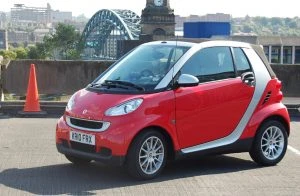
2010 Smart ForTwo
By far the smallest car being talked about in 2010 with excellent fuel consumption was the Smart ForTwo. It still fits into car parks like you wouldn’t believe! Small and safe, comfortable and peppy, any smart CBD commuter would be tempted by the tiny Smart ForTwo. It boasts a combined fuel economy figure that sits well under 5 litres/100 km – and this all coming from a ULP motor. Currently you can’t buy any new Smart car in Australia, though I’ve heard that, in the near future, they are making a comeback with purely electric power and with new design.
SsangYong
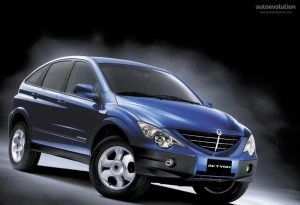
2010 SsangYong Actyon SUV
At the time, the 2010 SsangYong Actyon was about the most frugal SUV you could buy new at an impressively low price. The economic SUV has muscly looks and a rugged design that could see the vehicle handling tough off-road terrain with ease. SsangYong uses a 2.0 litre turbo-diesel engine in this vehicle, which packs over 300 Nm of torque to go with its excellent 4×4 underpinnings. Getting any 1.8 tonne vehicle to manage under 5 litres/100 km is a feat. So, well done to SsangYong! Currently, no more SsangYong vehicles quite match the excellent economy of an Actyon Diesel.
Suzuki
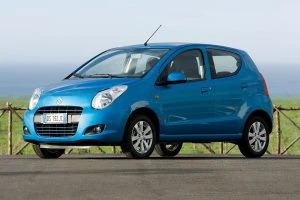
2010 Suzuki Alto
Budget priced, and one of the few petrol powered cars back in 2010 delivering awesome fuel economy was the Suzuki Alto. The Suzuki Alto 1.0 litre GL and GLX has an attainable fuel economy figure of 4.8 litres/100 km. The Suzuki Alto is also nice looking (bug-eyed), has six airbags, and even comes with ESP as standard in the GLX model. Great for around town – you’d be nuts to not consider an Alto.
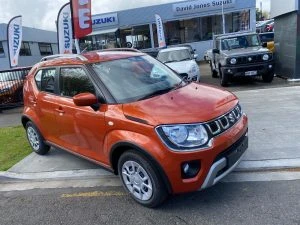
2022 Suzuki Ignis
There are no new Altos in 2022, but Suzuki do offer us the awesome little Suzuki Ignis GL Manual and GLX auto. These cars use a 1.2-litre ULP motor and deliver a similar fuel consumption to the 2010 Alto. Safety in new Suzuki cars has taken a big leap forward, so too has all the modern technology. Brand new Swift and Baleno models are definitely worth a look. These are also economy-driven cars with decent comfort, technology, and practicality.
Toyota
Where would the world be without Toyota? For a very frugal, spacious, and practical drive, the clean burning 2010 Toyota Prius III offered a 1.8 litre petrol hybrid engine. It didn’t come cheap, but it was certainly friendly on the environment. You could expect around 4.0 litres/ 100 km – sometimes better.
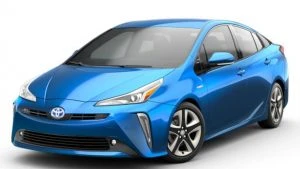
2022 Toyota Prius
You can now buy a 2022 Toyota Prius model for between $42–50k. These are nice cars and much more impressive to look at than the older models. They are safe and packed with excellent features. The Prius still continues with the same petrol-electric engineering that made it such a standout when it was launched in 2001. The same basic technology remains for the 4th-generation Prius, as well as all Toyota/Lexus hybrids these days. So, what a new Prius offers is a small-capacity 4-cylinder engine that works through a planetary gear set to dispense the delivery of power to the front wheels (or also the rear wheels in SUV variants). The current Toyota Prius is powered by a 72kW/142Nm 1.8-litre engine that combines with an electric motor to produce a joint maximum power output of 90kW and a claimed fuel consumption of 3.4 litres/100km. Better than ever! Toyota newest vehicles: the CH-R, Camry, Corolla, RAV-4, and Yaris Hybrid models are available with very low fuel consumption figures. Toyota and Honda are masters of the Hybrid-game, and have been for quite some time.
VW
Back in 2010, the Germans offered plenty of cars with excellent fuel consumption. Volkswagen has for a long time offered well-designed, reliable and fuel efficient motorcars. They are generally refined, elegant, and roomy, and the 2010 VW Golf 77TDI variant easily boasts fuel economy figures below 5 litres/100 km on a combined cycle.
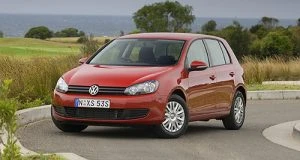
2010 VW 77TDI
2022 sees the Golf Hatch with 5 models, and in Wagon form it has a couple of nice new variants. The base models use a 110TSI 1.4-litre ULP motor, which is a 4-cylinder that is smooth and can return a claimed 5.8 litres/100 km. 250 Nm of torque offers muscle when you need it, and the car cruises at high speed effortlessly. The 8th-generation of the Golf brings not only fresh external and interior design, but it is also the safest, most tech-laden ever.
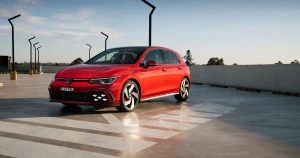
2022 VW Golf 110TSI
There are other new cars right across the auto-manufacturing spectrum now that offer superb fuel economy or EV power alone. It’s interesting how in that time (2010–2022) we’ve seen auto manufacturers taking a shift away from providing the new-car buyer with several frugal diesel family options to a fleet that is now a lot more Hybrid in flavour. It’s a change coerced by new government law and regulation. However, hybrid vehicles are superb automobiles that offer top fuel consumption figures and practicality, creating that much needed bridge between purely fossil fuel vehicles and completely EV-powered automobiles
Do check out the brand new arrivals. Cars like the Hyundai IONIC, Hyundai KONA, Kia EV6, Kia Niro, Mazda MX-30, BMW i and Hybrid models, Mercedes Benz EQA and EQC models, MG HS EV, Polestar cars, Tesla, and Volvo’s Recharge and Hybrid models are just some of the amazing new cars available that we can now buy that weren’t even a showing back in 2010.
Happy commuting!
Fuel Miser Comparison (2010/2022) Ford-Peugeot

I thought I’d look at a list of cars that featured in an article written back in 2010, where I compared some of the thriftiest cars at that time. These were cars which had been designed to function as some of the world’s best fuel sippers. These vehicles were sold new in Australia, but I thought I’d add a new twist this time by adding what we can consider as the brand new version of these old models with their statistics for fuel consumption as a comparison – you know, a bit of nostalgia along with the new, and what’s changed – or not.
Note that the fuel consumption figures are based on the number of litres of fuel consumed every 100 km travelled. Often real world situations can play havoc with Lab tested fuel consumption figures, but this definitely gives you an interesting picture. And, here is the list that is in alphabetical order – just to be helpful:
Ford
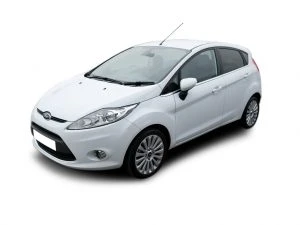
Ford Fiesta Econetic 2010
Back in 2010, the benchmark for fuel-misers belonged to the stylish Ford Fiesta Econetic. Nothing was able to beat the claimed 3.7 litres/100 km fuel economy figure that this car offered. It is a nicely designed car that looks good even today, and is also a great handling FWD Hatch.
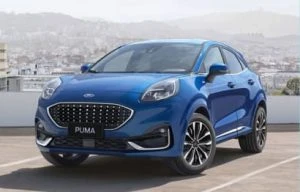
Ford Puma 2022
I’m not quite sure why, but Ford no longer sell us a new Fiesta Hatchback. However, you can buy a brand new Ford Fiesta-based Puma in 2022, which is a small SUV (Hatchback on steroids) that comes with a 92kW/170Nm 3-cylinder turbo petrol engine. Cabin space is claimed to be class-leading, and the boot expands from 456 litres to 1161 litres. You can also enjoy a fuel consumption figure of around 5.3 litres/100 km.
Honda
Honda’s ever reliable Civic is still a nice drive today. In 2010 Honda offered it in a Hybrid Sedan shape that employed a little 1.3 litre Hybrid Honda engine, delivering a combined economy of around 4.5 – 5.0 litres/100 km.
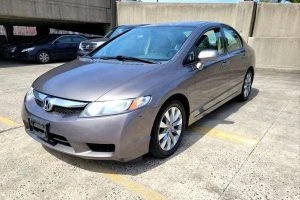
Honda Civic 2010
2022 sees the Civic come alive with a very classy exterior and a powerful 1.5-litre Turbo petrol engine with 131 kW of power and 240Nm of torque. Somewhere around 6.3 litres/100 km is attainable, and with a ride that is comfortable and athletic.
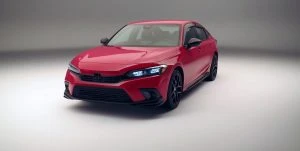
Honda Civic 2022
To find Honda’s current fuel miser, the brand new HR-V is an eco-friendly rewarding drive. Honda’s e:HEV technology in the HR-V utilises an intelligent 2-Motor i-MMD hybrid system that seamlessly switches between three modes to give you optimal performance, and a smoother, greener, and more fun driving experience. A claimed 4.3 litres/100 km for the e:HEV-L hybrid and 5.8 litres/100 km for the Vi X 1.6-litre petrol motor is on offer.
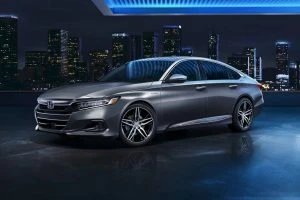
Honda Accord Hybrid Sedan 2022
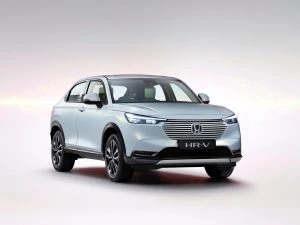
2022 Honda HR-V
All class, you can also get yourself into one of the best Hybrid Sedans you can buy: the 2022 Honda Accord Hybrid. It boasts a claimed 4.3 litres/100 km combined fuel economy – a very good figure for what is a sporty, comfortable family sedan, with striking looks and all the modern goodies.
Hyundai
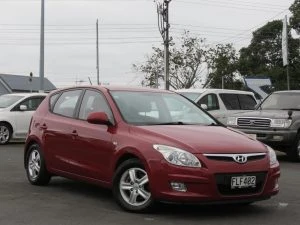
Hyundai i30 CRDI 2010
Back in 2010, Hyundai had come to the economy party with its 1.6 litre turbo-diesel Hyundai i30, known as the SX CRDi. Back then, it was Australia’s cheapest diesel car to buy new. The car was pleasant to look at, and it had a nicely finished interior and plenty of zip. With 255 Nm of torque, and a fuel economy figure of 4.7 litres/100 km, it’s still an economic little car to drive around in today.
2022 has seen Hyundai exploding with all sorts of new and exciting models that are economical, practical, and full of all the best safety and technology as standard! Hyundai’s 2022 i30 Sedan and Hatch can come with a 120kW/203Nm 2.0-litre aspirated petrol engine, a 150kW/265Nm 1.6-litre turbo-petrol and, in hot N variants, a storming 206kW/392Nm 2.0-litre petrol turbo. The 1.6-litre Turbo is the most frugal, offering around 6.8-7.0 litres/100 km combined.
But wait, there’s more! Hyundai’s 2022 IONIC and KONA models have skipped the Hybrid tech and gone straight to EV power.
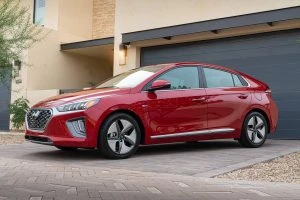
2022 Hyundai IONIQ
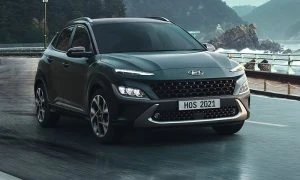
2022 Hyundai KONA
MINI
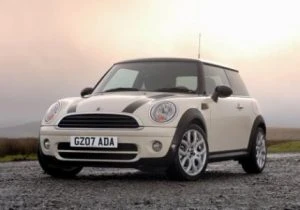
2010 Mini Cooper D
Mini, or BMW more correctly, offered the little Mini Cooper D in 2010 with a small 1.6 litre turbo-diesel engine, excellent fuel economy, and plenty of punch. As the frugal engine is linked to a six-speed manual gearbox, the claimed 3.9 litres/100 km was doable in a number of conditions.
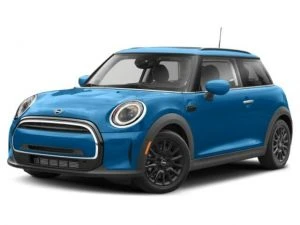
2022 Mini Cooper Classic
Fast forward to 2022, and a new Mini still has one of the catchiest hatchback designs you can buy, along with, perhaps, the best handling characteristics in a FWD small hatchback. They are definitely worth a look and loads of fun. You have many different models to choose from, however the base model Mini Cooper Classic is the most efficient now, with no diesel engine offered anymore. The 3-cylinder 1.5-litre Turbo petrol engine uses DOHC with VVT and VV-Lift technology, and can return a BMW claimed 4.9 (Highway), 6.9 (City), and 5.7 (combined) litres/100 km, respectively.
Peugeot
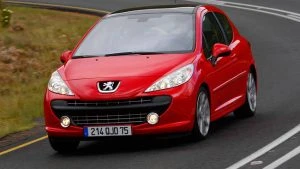
2010 Peugeot 207
Small French Pugs have always been a favourite hatchback of mine. For all their quirks, they are comfortable, practical, efficient, and generally classy all-round. In 2010, the little Peugeot 207 offered a fine economy package in the XT HDi, boasting just 4.8 litres/100 km combined.
2022 sees Peugeot offering us the 2008 GT with a ULP 1.2-litre Turbo 3-Cylinder motor capable of 114 kW, 240 Nm and a claimed economy figure of 6.1 litres/100 km. With this one, you get a very comfortable, practical little SUV with premium safety features.
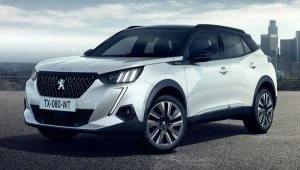
2022 Peugeot 2008 GT
Hybrids have taken off, and so the best and most impressive Peugeot of the lot is the new Peugeot 508 GT Plug-in Hybrid. The 508 range has stunning lines and is an exciting car. The 508 Sedan or 508 Wagon are roomy, very comfortable, and loaded with excellent technology and safety. You fork out around $77k for one of these new, however, it costs way less than a German equivalent. Peugeot reckon you can obtain 1.8 litres/100 km of ULP fuel use if your commute’s stars align. Regardless of whether you quite get down to this, this sort of hybrid travel is impressive in its own right!
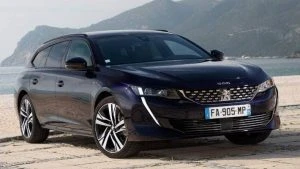
2022 Peugeot 508 GT Wagon